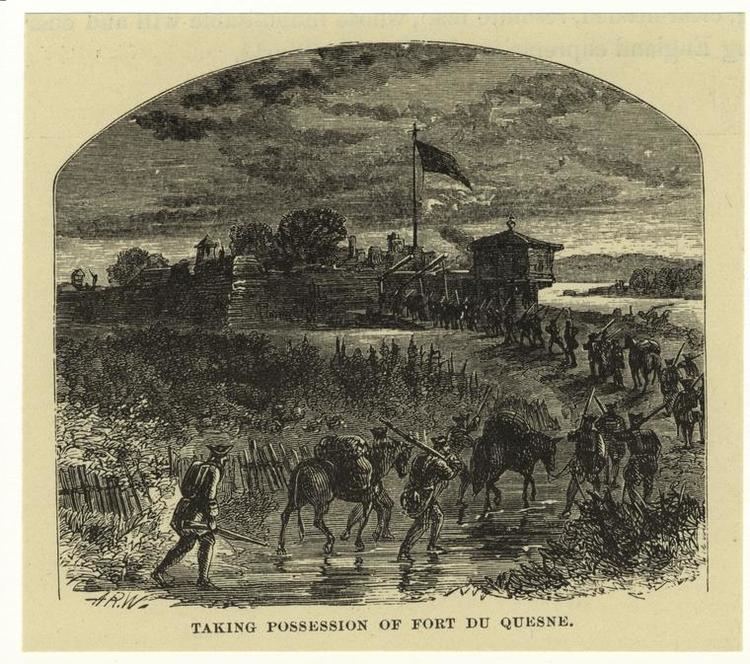 | ||
Similar Battle of Jumonville Glen, Boston campaign, Yorktown campaign, Battle of Fort Necessity, Braddock Expedition | ||
Forbes expedition
The Forbes Expedition was a British military expedition led by Brigadier-General John Forbes in 1758, during the latter stages of the French and Indian War. Like the earlier unsuccessful Braddock Expedition early in the war, the strategic objective was the capture of Fort Duquesne, a French fort constructed at the confluence of the Allegheny and Monongahela Rivers in 1754 (site of present-day downtown Pittsburgh, Pennsylvania's Golden Triangle).
Forbes commanded between 6,000 and 8,000 men, including a contingent of Virginians led by George Washington. Forbes, very ill, did not keep up with the advance of his army, but entrusted it to his second in command, Lt. Col. Henry Bouquet, a Swiss officer commanding a battalion of the Royal American Regiment.
The expedition methodically constructed a road across what is now the southern part of Pennsylvania's Appalachian Plateau region, staging from Carlisle and exploiting the climb up via one of the few southern gaps of the Allegheny through the Allegheny Front, into the disputed territory of the Ohio Country, which was then a largely depopulated Amerindian tributary territory of the Iroquois Confederation. This well organized expedition was in contrast to a similar expedition led by Edward Braddock in 1755 that ended in the disastrous Battle of the Monongahela.
Working for most of the summer on the construction of the road, periodic fortified supply depots, the expedition did not come within striking distance of Fort Duquesne until September 1758. In mid-September, a reconnaissance force was soundly defeated in the Battle of Fort Duquesne when its leader, Major James Grant, attempted to capture the fort instead of gathering information alone.
The French, their supply line from Montreal cut by other British actions, attacked one of the expedition's forward outposts, Fort Ligonier, in an attempt to either drive off the British or acquire further supplies, but were repulsed in the Battle of Fort Ligonier.
The Treaty of Easton concluded on October 26, 1758, caused the remnants of the Lenape (Delaware), Mingo, and Shawnee tribes in the Ohio Valley to abandon the French, and set up the conditions that ultimately forced them to move westward once again. This collapse of Native American support made it impossible for the French to hold Fort Duquesne and the Ohio Valley. When the expedition neared to within a few miles of Fort Duquesne in mid-November, the French abandoned and blew up the fort. Three units of scouts led by Captain Hugh Waddell entered the smoking remnants of the fort under the orders of Colonel George Washington on November 24. General Forbes, who was ill with dysentery for much of the expedition, only briefly visited the ruins. He was returned to Philadelphia in a litter, and died not long afterward.
The collapse of Indian support and subsequent withdrawal of the French from the Ohio Country helped contribute to the "year of wonders", the string of British 'miraculous' victories also known by the latin Annus Mirabilis.
